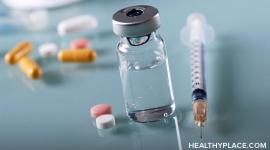How to Control Your Diabetes

Here are four key steps to help you manage and control your diabetes and live a long and active life.
4 Steps to Control Diabetes
Step 2: Know your diabetes ABCs.
Diabetes is a serious disease. It affects almost every part of your body. That is why a health care team may help you take care of your diabetes:
- doctor
- dentist
- diabetes educator
- dietitian
- eye doctor
- foot doctor
- mental health counselor
- nurse
- nurse practitioner
- pharmacist
- social worker
- friends and family
You are the most important member of the team.
The ![]() marks on this page show actions you can take to manage your diabetes.
marks on this page show actions you can take to manage your diabetes.
![]() Help your health care team make a diabetes care plan that will work for you.
Help your health care team make a diabetes care plan that will work for you.
![]() Learn to make wise choices for your diabetes care each day.
Learn to make wise choices for your diabetes care each day.
Step 1: Learn About Diabetes
Diabetes means that your blood glucose (blood sugar) is too high. There are two main types of diabetes.
Type 1 diabetes - the body does not make insulin. Insulin helps the body use glucose from food for energy. People with type 1 diabetes need to take insulin every day.
Type 2 diabetes - the body does not make or use insulin well. People with type 2 diabetes often need to take pills or insulin. Type 2 is the most common form of diabetes.
Gestational diabetes - may occur when a woman is pregnant. Gestational diabetes raises her risk of getting another type of diabetes, mostly type 2, for the rest of her life. It also raises her child's risk of being overweight and getting diabetes.

Diabetes is serious.
You may have heard people say they have "a touch of diabetes" or "your sugar is a little high." These words suggest that diabetes is not a serious disease. That is not correct. Diabetes is serious, but you can learn to manage it!
All people with diabetes need to make healthy food choices, stay at a healthy weight, and be physically active every day.
Taking good care of yourself and your diabetes can help you feel better. It may help you avoid health problems caused by diabetes such as:
- heart disease and stroke.
- eye problems that can lead to trouble seeing or going blind.
- nerve damage that can cause your hands and feet to feel numb. Some people may even lose a foot or a leg.
- kidney problems that can cause your kidneys to stop working.
- gum disease and loss of teeth.
When your blood glucose (blood sugar) is close to normal you are likely to:
- have more energy.
- be less tired and thirsty and urinate less often.
- heal better and have fewer skin or bladder infections.
- have fewer problems with your eyesight, feet, and gums.
![]() Ask your health care team what type of diabetes you have.
Ask your health care team what type of diabetes you have.
![]() Learn why diabetes is serious.
Learn why diabetes is serious.
![]() Learn how caring for your diabetes helps you feel better today and in the future.
Learn how caring for your diabetes helps you feel better today and in the future.
Step 2: Know Your Diabetes ABCs. (A1C, Blood Pressure, and Cholesterol)
Talk to your health care team about how to manage your A1C (blood glucose or blood sugar), Blood pressure, and Cholesterol when you have diabetes. This will help lower your chances of having a heart attack, a stroke, or other diabetes problems. Here's what the ABCs of diabetes stand for:
A for the A1C test (A-one-C)
The A1C test shows what your blood glucose (blood sugar) has been over the last three months. The A1C goal for most people with diabetes is below 7. High blood glucose (blood sugar)levels can harm your heart and blood vessels, kidneys, feet, and eyes.
B for Blood pressure.
The goal for most people with diabetes is below 130/80.
High blood pressure makes your heart work too hard. It can cause heart attack, stroke, and kidney disease.
C for Cholesterol.
The LDL goal for most people with diabetes is less than 100.
The HDL goal for most people with diabetes is above 40.
LDL or "bad" cholesterol can build up and clog your blood vessels. It can cause a heart attack or a stroke. HDL or "good" cholesterol helps remove cholesterol from your blood vessels.
![]() Ask your health care team:
Ask your health care team:
- What you can do to reach your targets
- What should your ABC numbers should be
- What your A1C, blood pressure, and cholesterol numbers are
![]() Write down all your numbers.
Write down all your numbers.
Step 3: Manage Your Diabetes
Many people avoid the long-term problems of diabetes by taking good care of themselves. Work with your health care team to reach your ABC goals (A1C, Blood Pressure, Cholesterol): Use this self-care plan.
- Use your diabetes meal plan. If you do not have one, ask your health care team about one.
- Make healthy food choices such as fruits and vegetables, fish, lean meats, chicken or turkey without the skin, dry peas or beans, whole grains, and low-fat or skim milk and cheese.
- Keep fish and lean meat and poultry portion to about 3 ounces (or the size of a deck of cards). Bake, broil, or grill it.
- Eat foods that have less fat and salt.
- Eat foods with more fiber such as whole grains cereals, breads, crackers, rice, or pasta.
- Get 30 to 60 minutes of physical activity on most days of the week. Brisk walking is a great way to move more.
- Stay at a healthy weight by using your meal plan and moving more.
- Ask for help if you feel down. A mental health counselor, support group, member of the clergy, friend, or family member who will listen to your concerns may help you feel better.
- Learn to cope with stress. Stress can raise your blood glucose (blood sugar). While it is hard to remove stress from your life, you can learn to handle it.
- Stop smoking. Ask for help to quit.
- Take medicines even when you feel good. Ask your doctor if you need aspirin to prevent a heart attack or stroke. Tell your doctor if you cannot afford your medicines or if you have any side effects.
- Check your feet every day for cuts, blisters, red spots, and swelling. Call your health care team right away about any sores that do not go away.
- Brush your teeth and floss every day to avoid problems with your mouth, teeth, or gums
- Check your blood glucose (blood sugar). You may want to test it one or more times a day. Keep a record of your blood glucose numbers. Be sure to take this record to your doctor visits.
- Check your blood pressure if your doctor advises.
- Report any changes in your eyesight to your doctor.
 Talk with your health care team about your blood glucose targets. Ask how and when to test your blood glucose and how to use the results to manage your diabetes.
Talk with your health care team about your blood glucose targets. Ask how and when to test your blood glucose and how to use the results to manage your diabetes.  Use this plan as a guide to your self-care.
Use this plan as a guide to your self-care. Discuss how your self-care plan is working for you each time you visit your health care team.
Discuss how your self-care plan is working for you each time you visit your health care team.
Step 4: Get Routine Care to Avoid Diabetes Health Problems
See your health care team at least twice a year to find and treat any problems early. Ask what steps you can take to reach your goals.
If you have diabetes, at each visit be sure you have a:
- blood pressure check
- foot check
- weight check
- review of your self-care plan shown in Step 3
If you have diabetes, two times each year get:
- A1C test - it may be checked more often if it is over 7
If you have diabetes, once each year be sure you have a:
- cholesterol test
- triglyceride test - a type of blood fat
- complete foot exam
- dental exam to check teeth and gums - tell your dentist you have diabetes
- dilated eye exam to check for eye problems
- flu shot
- urine and a blood test to check for kidney problems
If you have diabetes, at least once get a:
-
Pneumonia shot
![]() Ask your health care team about these and other tests you may need. Ask what the results mean.
Ask your health care team about these and other tests you may need. Ask what the results mean.
![]() Write down the date and time of your next visit.
Write down the date and time of your next visit.
![]() Keep a record of your diabetes care.
Keep a record of your diabetes care.
![]() If you have Medicare, ask your health care team if Medicare will cover some of the costs for
If you have Medicare, ask your health care team if Medicare will cover some of the costs for
- learning about healthy eating and diabetes self-care
- special shoes, if you need them
- medical supplies
- diabetes medicines
Where to Get Help for Diabetes:
Many of these groups offer items in English and Spanish.
National Diabetes Education Program
1-800-438-5383
www.ndep.nih.gov
American Association of Diabetes Educators
1-800-TEAM-UP4 (800-832-6874)
www.diabeteseducator.org
American Diabetes Association
1-800-DIABETES (800-342-2383)
www.diabetes.org
American Dietetic Association
1-800-366-1655
www.eatright.org
American Heart Association
800-AHA-USA1 (800-242-8721)
www.americanheart.org
Centers for Disease Control and Prevention
1-877-232-3422
www.cdc.gov/diabetes
Centers for Medicare & Medicaid Services
1-800-MEDICARE (800-633-4227)
www.medicare.gov/health/diabetes.asp
National Institute of Diabetes and Digestive and Kidney Diseases
National Diabetes Information Clearinghouse
1-800-860-8747
www.niddk.nih.gov
APA Reference
Staff, H.
(2022, January 4). How to Control Your Diabetes, HealthyPlace. Retrieved
on 2025, December 24 from https://www.healthyplace.com/diabetes/treatments/how-to-control-your-diabetes


